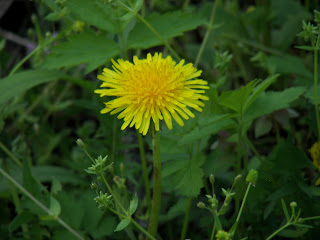Been crazy busy for us. How does that happen to retired people? Spent a couple of days in Chicago with granddaughter, Ashley.
How did I forget the most important element of clothing for Chicago: comfortable shoes? The old saying "It's only a few blocks." and wowzer I should have worn something besides those cute sandals.
Besides all the things we love about Chicago, I especially enjoy their public gardens. The sidewalk planters were just beginning to be filled with yellow pansies. The gardens around Millennium park had red roses blooming but not much in the way of annuals had been set out. My guess Chicago streets and parks departments are on a schedule and hell, high water nor early spring gets that schedule moved.
Our granddaughter lives in Atlanta GA and she noticed one thing very different about Chicago: it's so clean. Pretty great difference and a lot of work.
Being the Memorial Day weekend, the city was full of residents and visitors alike enjoying beautiful weather and many activities. We had front row seats (curb) at the Memorial Day parade. No one does a parade like Chicago. It's big production while keeping the feeling of neighborhood. Over two hours of military, former military, police and fire units. Bands, flags, uniforms and a few floats.
We took the architectural boat tour of the Chicago River and Lake Michigan. Perfect day for a boat ride and interesting. I'd done the walking tour with an old friend who was then a guide volunteer. Next, I'm ready for the guided tour of Chicago gardens!
If you haven't already, it's time to finish putting in your vegetable garden plants. Mulch heavily this year. It appears having enough moisture will not be one of our summer blessings.
Thanks to all our servicemen and women, our veterans, military injured and killed and their families. Today, we can enjoy our peaceful gardens, abundant flowers and food, and a military parade that focuses on showing our appreciation. If you're the praying kind, offer one today of thanks, good decisions and an appeal for their protection.
How did I forget the most important element of clothing for Chicago: comfortable shoes? The old saying "It's only a few blocks." and wowzer I should have worn something besides those cute sandals.
Besides all the things we love about Chicago, I especially enjoy their public gardens. The sidewalk planters were just beginning to be filled with yellow pansies. The gardens around Millennium park had red roses blooming but not much in the way of annuals had been set out. My guess Chicago streets and parks departments are on a schedule and hell, high water nor early spring gets that schedule moved.
Our granddaughter lives in Atlanta GA and she noticed one thing very different about Chicago: it's so clean. Pretty great difference and a lot of work.
 |
| Veteran's Honor Hybrid Tea Rose |
We took the architectural boat tour of the Chicago River and Lake Michigan. Perfect day for a boat ride and interesting. I'd done the walking tour with an old friend who was then a guide volunteer. Next, I'm ready for the guided tour of Chicago gardens!
If you haven't already, it's time to finish putting in your vegetable garden plants. Mulch heavily this year. It appears having enough moisture will not be one of our summer blessings.
Thanks to all our servicemen and women, our veterans, military injured and killed and their families. Today, we can enjoy our peaceful gardens, abundant flowers and food, and a military parade that focuses on showing our appreciation. If you're the praying kind, offer one today of thanks, good decisions and an appeal for their protection.

.JPG)
.JPG)
.JPG)
.JPG)
.JPG)
.JPG)
.JPG)
.JPG)
.JPG)
.JPG)

.JPG)
.JPG)
.JPG)
.JPG)
.JPG)
.JPG)




.JPG)
.JPG)
.JPG)
.JPG)
.JPG)
.JPG)
.JPG)
.JPG)


.JPG)